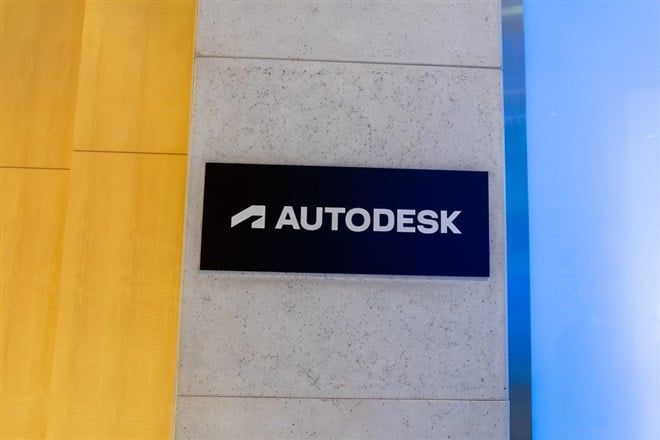Ticker Reports for October 11th
3 Micro-Caps Set for Major Moves: Balancing Risk and Opportunity
Micro-cap stocks can come in many shapes and sizes. Some might be once successful firms that lost their way and are looking to recover their prior glory. Others are companies that may have yet to generate any substantial revenues but could growth strongly if their offerings start to catch on.
Investing successfully in micro-cap stocks is difficult. Selecting the wrong company can lead to a loss of all or a substantial part of an investment. However, picking the right one could result in a big payday. The iShares Micro-Cap ETF (NYSEARCA: IWC) has provided a total return of just over 100% over the past 10 years. That severely lags the SPDR S&P 500 ETF Trust (NYSEARCA: SPY), which has returned 266% over the same period.
Below, I’ll dive into three micro-cap companies that show large potential upside but also carry significant risk.
Amprius: Advanced Battery Technology, But Significant Scale Is Needed
First up is Amprius (NYSE: AMPX) Technologies. The industrial company makes high-density lithium-ion batteries that use silicon nanowire anodes. Compared to the traditional graphite anodes that lithium-ion batteries use, these anodes take up less space, allowing them to package more lithium into a battery. This technology can substantially extend battery life in a variety of applications.
The company shows the range of a Tesla Model 3, and the flight time for a drone can be increased by around 75%. It also shows that its batteries can charge up to 80%, around five times faster than graphite anode batteries. The company’s products are primarily used in drones and high-altitude pseudo-satellites (“HAPS”).
However, this company is extremely unprofitable. The cost directly associated with producing its batteries was around three times higher than the revenue it made from them. This gave the firm a gross profit margin of -195% last quarter. With over $12 million in revenue over the last twelve months, it is reasonable to think the company could be profitable if it scaled up massively.
Price targets are wide-ranging for this firm, but a target released by Oppenheimer implies 1,117% upside. Shares have been on the rise as of late after the company disclosed $20 million in new orders. Still, the company will need to achieve much higher sales than that to be profitable. It is designing a new manufacturing facility in Colorado to increase its production capacity.
Comstock: Expanding Capacity to Capitalize Off Solar Panel Recycling
Comstock Inc. (NYSE: LODE) is a decarbonization and recycling company. One of its biggest focuses right now is building up capacity to recycle solar panel metal and then resell it.
The company currently has no substantial revenues and frequently issues more equity to fund its operations. However, it does have substantial cash on its balance sheet that it can use for funding currently. Shares have been on the rise since the company recorded its first shipments and sales of renewable metal extracted from old solar panels.
The company recently secured its first lease for a large-scale facility to expand its recycling capacity. It believes that this part of the business could be profitable by 2026 and plans to have three facilities opened by then.
Right now, the stock is trading at just $5 million higher than its assets minus its liabilities, or its book value.
Getting traction in the solar panel recycling business could mean big things for the stock, as according to MIT, “8 million tons of decommissioned solar panels could accumulate by 2030." Noble Capital Markets sees a 468% upside in this stock based on their $2.60 price target released on Aug. 13.
Marinus Hopes to Expand the Market for Its Key Drug
Last is Marinus Pharmaceuticals (NASDAQ: MRNS). The company is currently waiting to release Phase 3 Food and Drug Administration (FDA) results for its drug ganaxalone.
The drug aims to treat Tuberous Sclerosis Complex (TSC). If approved, the company could use its drug to treat around 12,700 people.
The FDA has already approved the drug for a condition with similar symptoms. However, a TSC approval could generate much more revenue as it affects many more patients.
The average price target for the firm sits at $8.50. From the current $1.65 price, this represents an over 400% potential upside for the stock.
The company plans to release the results of this Phase 3 trial in less than a month.
If the results are strong, they could have a massive positive effect on the stock price. However, if they disappoint, they could also greatly hurt the stock price, leading to a big downgrade.
Blackrock's Sending THIS Crypto Higher on Purpose
It's a groundbreaking opportunity that could be poised for extraordinary gains.
The catalyst behind this surge is a massive new blockchain development…
Autodesk Named a "Top Pick" by Morgan Stanley—Is It Time to Buy?
Autodesk (NASDAQ: ADSK) is a technology company that provides digital solutions to customers focused on solving physical problems. With Morgan Stanley recently naming this stock one of its “top picks," it feels pertinent to dive into what this company does and understand what aspects could make it a strong investment. I’ll explain the company’s products and strategy going forward and give my assessment of the stock right now.
Autodesk: A Provider of Key Design and Construction Software
Autodesk mainly develops and sells software for architecture, engineering, and construction (AEC). Last quarter, revenue from software products specifically designed for AEC accounted for 47% of total revenue. However, the company also breaks out revenue for its largest brand of software products called AutoCAD. These same industries largely use AutoCAD; however, other industries also use it. AutoCAD brand revenues made up 26% of the total last quarter.
“CAD” stands for computer-aided design. The software is used to create 2D designs and 3D models of physical projects. Essentially, designers create all modern physical designs using some type of CAD software.
Substantially all of the company’s revenue comes from subscriptions. The company uses a mix of direct and indirect sales, but 63% of sales came from its distributors and resellers in fiscal 2024. The company’s revenues are fairly diversified by geography. America made up 43% of the total last quarter, Europe, the Middle East, and Africa made up 38%, and Asia Pacific made up the remainder.
Autodesk has several key components of its strategy going forward. One is that it intends to transition more to direct sales. This aims to give the company more customer data, provide more pricing control, and ultimately increase revenue.
Another key aspect is to expand its product adoption across the lifecycle of building a physical project. It is currently considered a dominant player in design software but not necessarily in manufacturing and construction. It wants to grow the adoption of its technology in those areas and become an end-to-end solution across these vectors.
To do this, it specifically wants to increase the adoption of its Fusion 360, Forma, and Flow products. The company accounts for these products in its “make” revenue, as opposed to its “design” revenue.
How Autodesk Is Improving Its Operating Margins
Looking at the company’s financials, we see it is growing revenue solidly at between 10% and 12% over the last few quarters. The company also appears to be executing well on growing its “make” business. Last quarter, revenues in this division grew by 25%. This represents a significant acceleration from the same period a year ago, when “make” revenues increased just 15%.
Additionally, the company has shown success in increasing its adjusted operating margin. Excluding foreign exchange and a shift to direct sales, the company has raised its operating margin by 300 basis points since fiscal 2023. It says it is a year ahead of schedule in achieving its adjusted operating margin of between 38% and 40%, excluding these effects.
The company is excluding the effects of the new sales model as it has a neutral effect on operating income. However, due to accounting, it increases revenue and operating expenses in the near term, making the operating margin appear lower. The strategy aims to improve margins long-term, but it will hurt them short-term during implementation.
Squaring Morgan Stanley’s Assessment
According to MT Newswires, Morgan Stanley believes the company has substantial room to improve margins. It thinks the GAAP operating margin could expand by up to 800 basis points by 2028 and says the company’s valuation is in line with peers. The average of the forward P/E ratios of companies Autodesk lists as competitors in its Form 10-K supports this valuation assessment. From its current level, Morgan Stanley's price target indicates a 15% upside in the stock. Its target is on the high end of estimates.
Through its new sales strategy, the company can expand margins in the long term. It is also pushing to increase the "make" part of its business. Last quarter, the design part of the business made over seven times the revenue of the design business, which shows its growth potential. Becoming an end-to-end provider could allow the company to expand margins as it could sell design and make products together.
Still, the company is fairly cyclical, with a beta of 1.5. With nonresidential construction spending growth expected to fall significantly next year, personally, I don’t see this as a great time to get into this stock.
CNBC's 'Prophet' issues urgent Fed warning
"How I 6X-ed my wife's 401K in 1 year"
At the peak of the dot-com boom, a former hedge fund manager put all $20,000 of his wife's 401k into shares of just ONE stock. Everyone on Wall Street said he was crazy. But a year later, that $20,000 in his wife's account was worth $120,000. Today, he says: "If you thought the dot-com mania was intense, what's about to happen in the coming weeks could be even crazier and could open up a new window of opportunity for 500%-plus gains."
4 Quirky ETFs With Big Potential for Impressive Gains
Though perhaps not as trendy as they were years ago, exchange-traded funds (ETFs) are nonetheless a core investment vehicle—and still an exceedingly popular one, at that. As of 2023, there were more than 10,000 ETFs listed across the globe, up by nearly a quarter from just three years earlier. Together, these funds manage a gargantuan $11.5 trillion in assets.
Leaders in the ETF space include proxies for prominent indices like the S&P 500 or the NASDAQ, and even funds aiming to represent the complete global stock market. But ETFs like the SPDR S&P 500 ETF Trust (NYSEARCA: SPY), the Invesco QQQ (NASDAQ: QQQ), and the Vanguard Total World Stock Index Fund ETF (NYSEARCA: VT) tell only part of the picture of the ETF environment.
Besides these and other major players, themed ETFs abound, providing investors with a host of investment perspectives and niches. Some of these ETF themes seem to exist only to cater to ultra-specific investing strategies or even as a joke. Still, quirky ETFs may have the potential to provide solid returns for savvy investors.
ZIG: Potential Acquisition Targets
The Acquirers Fund ETF (NYSEARCA: ZIG) is an actively-managed ETF that holds a portfolio of stocks that the fund managers believe to be good potential targets for acquisitions or other takeover efforts. Taking the top 25% of all stocks by market capitalization as a potential pool, the fund selects roughly 30 names based on a combination of value metrics.
Stocks in the ZIG portfolio are likely to be undervalued relative to a conservative valuation assessment, to be capable of generating free cash flows, and to possess a liquid balance sheet. A benefit of ZIG is that it holds companies across multiple industries and sectors, providing diversification while maintaining a focus on value. The fund has returned more than 27% in the last year.
BUZZ: Following the Latest Trends
There can be a benefit to following investing trends, although keeping up with the latest popular stocks is time consuming and investors often worry that they will be too late to join in. The VanEck Social Sentiment ETF (NYSEARCA: BUZZ) tracks 75 large-cap U.S. stocks identified as top picks based on investor opinion and bullish sentiment. To select targets, BUZZ uses AI to scan through social media posts, articles, blogs, and similar sets of data.
The stocks included in the BUZZ portfolio trend toward popular tech names, but the portfolio is weighted such that no single position represents more than a few percent of invested assets. The ETF has outpaced the S&P 500 in the last year, returning more than 39% during that time.
NANC and KRUZ: Betting on Congress' Investments
The Unusual Whales Subversive Democratic Trading ETF (BATS: NANC) and the Republican Trading ETF (BATS: KRUZ) by the same provider make use of information provided by the STOCK Act, which mandates that Congresspeople report most stock trades within 45 days.
Nonetheless, some believe that the information available to these elected officials still gives them an advantage over other investors.
NANC and KRUZ aim to replicate trades made by Congresspeople registered as Democrats and Republicans, respectively, as well as their spouses.
Though both funds hold a similar-sized portfolio, their composition and distribution can be quite different; KRUZ is currently more evenly weighted than NANC, which has about a quarter of its assets focused on just a few positions.
NANC has outperformed KRUZ in the last year, returning 37.7% compared to 27.2%.
Beware Fees, Liquidity Issues
Themed ETFs give investors a ready-made way to explore a particular investment strategy or gimmick. But investors often pay handsomely for this convenience, as themed ETF expense ratios tend to be much higher than more straightforward funds. When some of the most popular ETFs have seen fees driven consistently lower due to competition between different providers, a niche ETF—which may be more likely to be actively managed and thus more resource-intensive to run—usually doesn't face the same fee pricing pressure. Further, these funds often lack substantial asset bases and trading volumes, making liquidity a potential concern for investors as well. Still, for those willing to look beyond these concerns or those interested in buying and holding, quirky themed ETFs may be worth considering.






0 Response to "🌟 3 Micro-Caps Set for Major Moves: Balancing Risk and Opportunity"
Post a Comment